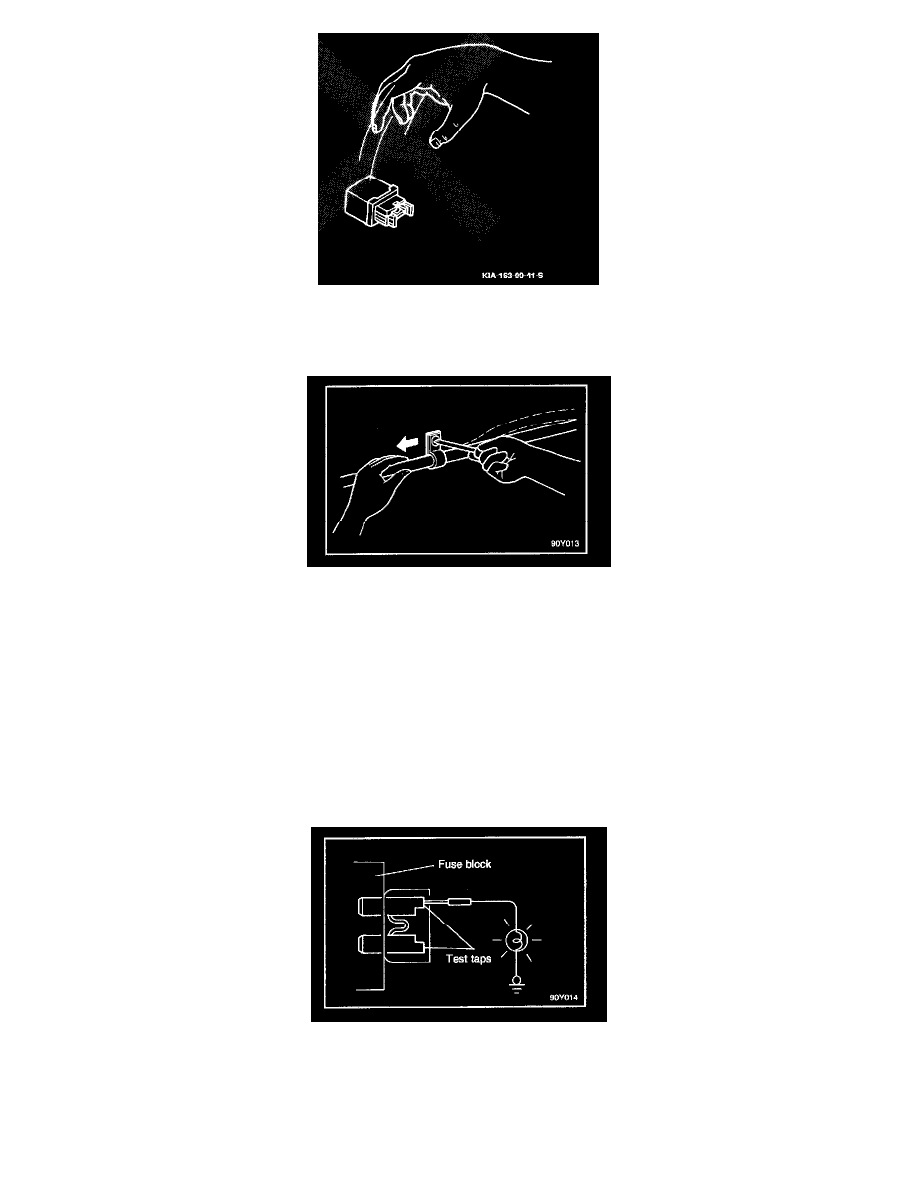Optima L4-2.4L (2001)

NOTE: Handle sensors, switches and relays carefully. Do not drop them or strike them against other parts.
Checking Cables and Wires
CHECKING CABLES AND WIRES
1. Check the terminal for tightness.
2. Check terminals and wires for corrosion by battery electrolyte, etc.
3. Check terminals and wires for open circuit or potential open circuit.
4. Check wire insulation and coating for damage, cracks and degrading.
5. Check conductive parts of terminals for contact with other metallic parts (vehicle body and other parts).
6. Check grounding parts to verify that there is complete continuity between attaching bolt(s) and vehicle body.
7. Check for incorrect wiring.
8. Check that wires are clamped so as to prevent contact with sharp corners of the vehicle body, etc. or hot parts (exhaust manifold, pipe, etc.)
9. Check that wires are clamped firmly to secure enough clearance from the fan pulley, fan belt and other rotating or moving parts.
10. Check that the wires between the fixed parts such as the vehicle body and the vibrating parts such as the engine are made with adequate allowance
for vehicle vibrations.
Checking Fuses
CHECKING FUSES
A blade type fuse has test taps provided to allow checking of the fuse itself without removing it from the fuse block. The fuse is okay if the test lamp
comes on when its one lead is connected to the test taps (one at a time) and the other lead is grounded. (Change the ignition switch position adequately so
that the fuse circuit becomes live.)
Service Points In Inspecting A Blown Fuse
